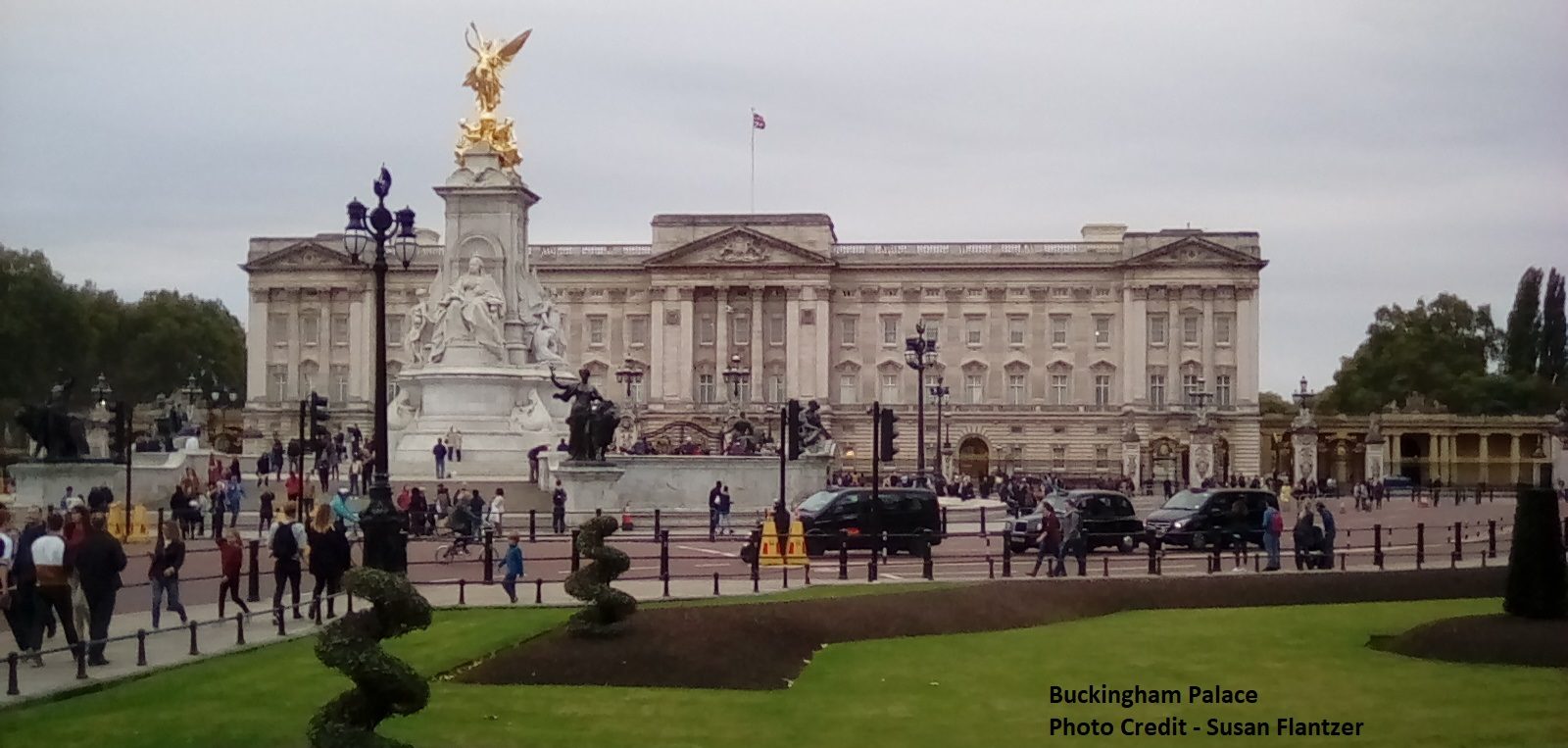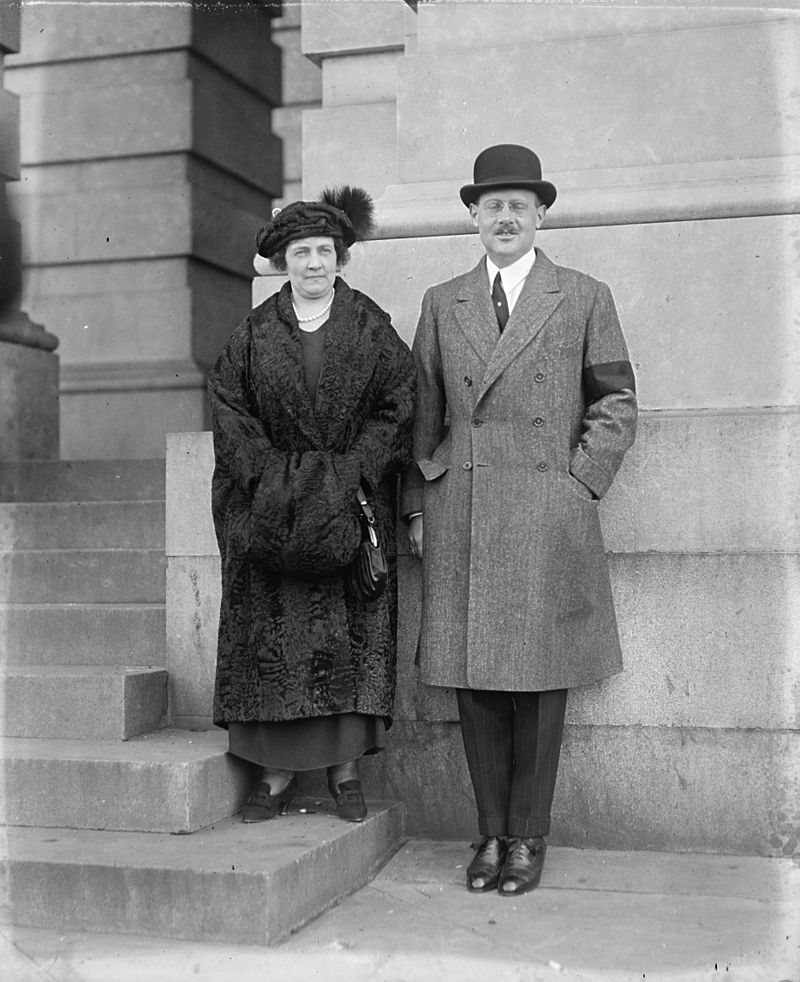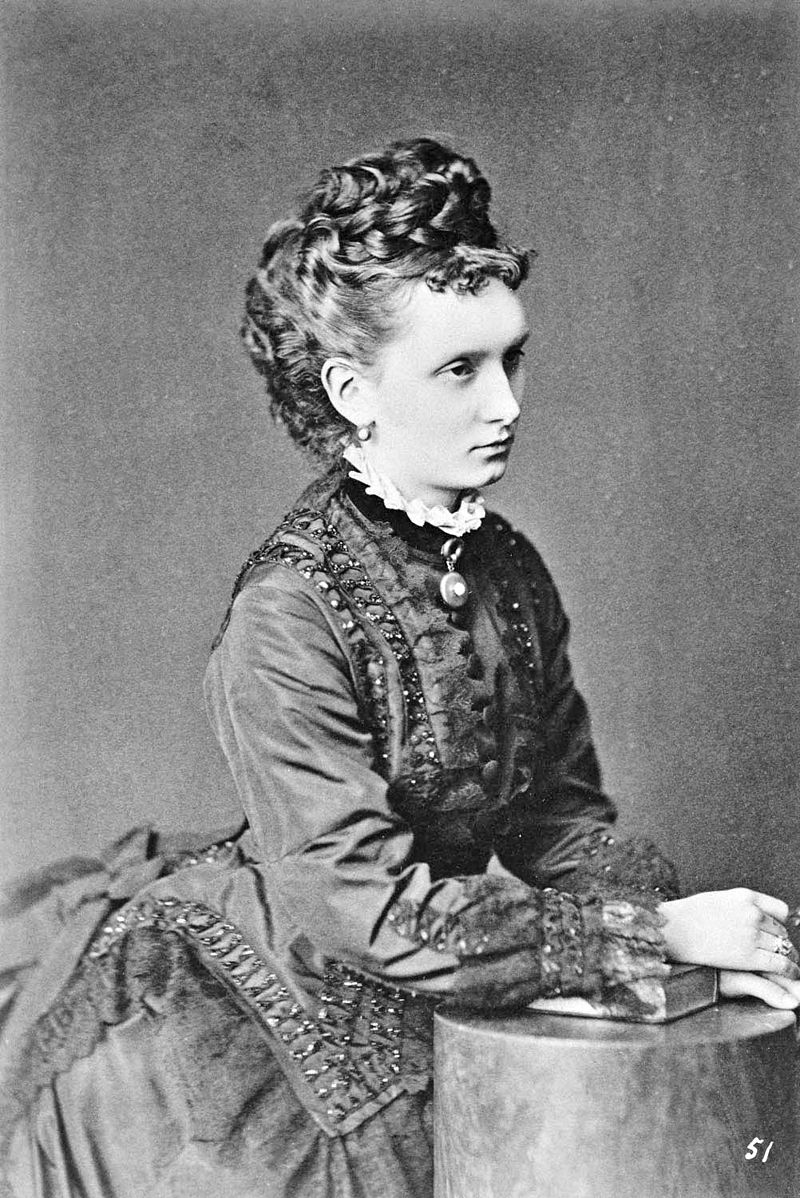by Susan Flantzer
© Unofficial Royalty 2019
On January 28, 1919, Grand Duke Paul Alexandrovich (58 years old), Grand Duke Dmitri Konstantinovich (58 years old), and two brothers, Grand Duke Nicholas Mikhailovich (59 years old) and Grand Duke George Mikhailovich (55 years old) were taken to the courtyard of the Fortress of Peter and Paul in St. Petersburg and executed by a firing squad. The four Grand Dukes were all first cousins as their fathers were all sons of Nicholas I, Emperor of All Russia. They were the last of the eighteen Romanovs killed as a result of the Russian Revolution.
***************

Grand Duke Paul, Alexandrovich; Credit – Wikipedia
Born in 1860, Grand Duke Paul Alexandrovich was the youngest of the six sons and the youngest of the eight children of Alexander II, Emperor of All Russia and Empress Maria Feodorovna (born Princess Marie of Hesse and by Rhine) and the paternal uncle of Nicholas II, Emperor of All Russia. Paul was only eight years older than his nephew Nicholas and the two had a close relationship.
Paul was educated with his brother Grand Duke Sergei Alexandrovich who was assassinated in 1905 when a bomb was thrown into his carriage. In 1881, Paul’s father Alexander II had also been assassinated in the same way. Paul served in the Russian Army as a general in the Cavalry and an adjutant general to his brother Alexander III, Emperor of All Russia.
In 1889, Paul married Princess Alexandra of Greece, the daughter of King George I of Greece and Grand Duchess Olga Konstantinovna of Russia. Alexandra gave birth to a daughter, Grand Duchess Maria Pavlovna, in 1890. When she was seven months pregnant with her second child in 1891, Alexandra slipped while entering a boat. This caused premature labor and a son, Grand Duke Dmitri Pavlovich, was born the next day. Sadly, Alexandra did not recover and died six days later. In 1916, Grand Duke Dmitri Pavlovich was one of the conspirators in the murder of Grigori Rasputin.
In 1895, Paul began an affair with a married woman Olga Valerianovna Karnovich. Olga gave birth in 1897 to a son, later titled Prince Vladimir Pavlovich Paley, who was killed on July 18, 1918, with Grand Duchess Elizabeth Feodorovna and four other Romanovs. Paul made a morganatic marriage to Olga in 1902 and they had two more children: Princess Irina Pavlovna Paley and Princess Natalia Pavlovna Paley. Because he married without Nicholas II’s permission, Paul was banished from Russia, dismissed from his military commissions, and his properties were seized. His brother Grand Duke Sergei was appointed the guardian of Maria and Dmitri. Eventually, Nicholas II relented and allowed Paul to return to Russia. Nicholas II recognized Paul’s second marriage and gave his second wife Olga the title Princess Paley.
***************

Grand Duke Dmitri Konstantinovich; Credit – Wikipedia
Born in 1860, Grand Duke Dmitri Konstantinovich was the third son and fifth child of Grand Duke Konstantin Nikolayevich of Russia (a son of Nicholas I, Emperor of All Russia) and Grand Duchess Alexandra Iosifovna (born Princess Alexandra of Saxe-Altenburg). Dmitri’s family life was not happy because of some family issues. His father had an affair with a ballerina and his eldest brother Nicholas Konstantinovich was disinherited and sent into internal Russian exile after stealing some of his mother’s diamonds.
Dmitri’s father was the Admiral General of the Russian Navy and hoped one of his sons would follow in his footsteps. Despite the fact that he had early naval training, Dmitri joined the Horse Guards Grenadiers Regiment in the Russian Army. Eventually, he was given command of the House Guards Grenadiers Regiment by Alexander III and was appointed Adjutant General to Nicholas II.
Dmitri was religious, a lifelong bachelor, was never involved in any scandals, and never played any role in Russian politics. When he retired from the army, he focused on his passion for horses. Dmitri created a model equestrian center, became president of the Imperial Society of Horse Racing, and was named the Honorary President of the Russian Society of Care and Protection of Animals. In the autumn of 1913, he started the Russian Imperial Horse Exposition and the Russian Sports Competition, a kind of Slavic Olympic Games.
***************

Grand Duke Nicholas Mikhailovich; Credit – Wikipedia
Grand Duke Nicholas Mikhailovich, known in the family as Bimbo, was born in 1859 and was the eldest of the six sons and the eldest of the seven children of Grand Duke Michael Nikolaevich of Russia (a son of Nicholas I, Emperor of All Russia) and Grand Duchess Olga Feodorovna (born Princess Cecilie of Baden). The Bolsheviks killed three sons of Grand Duke Michael Nikolaevich and Grand Duchess Olga Feodorovna. Along with their sons Nicholas and George who were both killed on January 28, 1919, their son Grand Duke Sergei Mikhailovich was killed on July 18, 1918, with Grand Duchess Elizabeth Feodorovna and four other Romanovs.
Nicholas never married. He had fallen in love with his first cousin Princess Victoria of Baden but the Russian Orthodox Church prohibited marriage between first cousins. Nevertheless, Nicholas asked his uncle Alexander II, Emperor of All Russia for permission to marry, saying he would never marry if he could not marry Victoria. Permission was denied and Victoria eventually married King Gustav V of Sweden. Nicholas did try a second time, but the potential bride, Princess Amélie of Orléans, the eldest daughter of Prince Philippe, Count of Paris. was Catholic and unwilling to convert to Russian Orthodoxy. Amélie later married King Carlos I of Portugal.
Nicholas had a career in the Russian army but his passion, even in childhood, was Russian history. In 1905, Nicholas left the military and pursued his interest in history full-time. Nicholas II, Emperor of All Russia granted him unlimited access to the Romanov Family Archives and Library. Grand Duke Nicholas wrote many historical books about Alexander I, Emperor of All Russia and the Napoleonic Wars. He was chairman of the Russian Historical Society and headed the Russian Geographical Society and the Society for the Protection and Preservation of Art and Antiquities. In 1915, Moscow University awarded Nicholas an honorary doctorate in Russian history.
***************

Grand Duke George Mikhailovich; Credit – Wikipedia
Born in 1863, Grand Duke George Mikhailovich was the third of the six sons and the fourth of the seven children of Grand Duke Michael Nikolaevich of Russia (a son of Nicholas I, Emperor of All Russia) and Grand Duchess Olga Feodorovna (born Princess Cecilie of Baden).
In 1900, George married Princess Maria of Greece (Grand Duchess Maria Georgievna), daughter of King George I of Greece and Grand Duchess Olga Konstantinovna of Russia. The couple had two daughters: Princess Nina Georgievna and Princess Xenia Georgievna. Grand Duchess Maria and her two daughters were in England when World War I broke out and chose not to return to Russia. They never saw George again.
George’s daughter Princess Xenia married millionaire William Leeds and lived in an estate on Long Island in New York State for years. For a few months in 1927, Xenia took in a woman claiming to be Grand Duchess Anastasia, the youngest daughter of Nicholas II, Emperor of All Russia, later found to be Anna Anderson, an impostor.
While George had a military career and served as a General in the Russian Army, he was a passionate coin collector. His collections of Russian coins and medals included practically every coin ever used in the Russian Empire and he wrote ten books on coins. One of them, Catalogue of Imperial Russian Coins 1725–1891, was reprinted in the United States in 1976 and is still an important reference on the subject. In 1895, George was appointed the curator of the Alexander III Museum, today the Russian Museum in St Petersburg. His knowledge of coins was invaluable in increasing the museum’s coin collection. In 1909, George donated his collection to the museum.
***************
In March 1918, all the male members of the Romanov family were ordered to register at Cheka headquarters, and then they were sent into exile in internal areas of Russia. Grand Duke Dmitri Konstantinovich, Grand Duke Nicholas Mikhailovich, and Grand Duke George Mikhailovich were sent to Vologda, a town north of Moscow. They could move freely around town and were able to visit each other frequently. Grand Duke Paul Alexandrovich avoided the exile order because he was too ill to travel. He remained in a dacha near Tsarskoye Selo.
An incident on June 13, 1918, during the execution of Grand Duke Michael Alexandrovich, the brother of Nicholas II, changed the way the remaining Romanovs were treated. It appeared to his executioners that Michael had been trying to escape after the gun that was intended for him misfired. The incident was used to justify the necessity of keeping all exiled Romanovs under a strict regime of imprisonment.
On July 1, 1918, Grand Duke Dmitri Konstantinovich, Grand Duke Nicholas Mikhailovich, and Grand Duke George Mikhailovich were arrested in Vologda where they had been exiled. They were sent back to St. Petersburg to the Shpalernaia Prison where they would remain for most of their incarceration. The Bolsheviks were determined to round up all the Grand Dukes still in Russia and so Grand Duke Paul was arrested on August 13, 1918. He joined the three other Grand Dukes at Shpalernaia Prison. Each Grand Duke was held in a cell, only seven feet by three feet. Each day, they were all allowed to gather in the courtyard for exercise, allowing the Grand Dukes the opportunity to exchange a few words.
Grand Duke George somehow managed to smuggle letters to his wife Grand Duchess Maria in England. The last letter was dated November 27, 1918. Grand Duchess Maria unsuccessfully tried to buy her husband’s freedom and the freedom of the other three Grand Dukes for fifty thousand pounds through the Danish ambassador in St. Petersburg. Queen Alexandrine of Denmark, a niece of Grand Dukes Nicholas and George, tried unsuccessfully to obtain the release of the four Grand Dukes, also through the intervention of the Danish ambassador. On December 6, 1918, Grand Duke Paul’s health, which was already bad, declined sharply, and he was transferred to a prison hospital.
The writer Maxim Gorky had been a supporter of Vladimir Lenin and the Bolsheviks but after seeing the terror of the new regime, he changed his mind. Princess Paley, Grand Duke Paul’s wife, asked Gorky to intercede on behalf of the four Grand Dukes. In January 1919, Gorky went to Lenin to plead the case of the four Grand Dukes. Gorky pleaded the merits of each Grand Duke. When Gorky came to Grand Duke Nicholas Mikhailovich, he said, “Grand Duke Nicholas Mikhailovich is a historian.” Lenin replied, “The Revolution does not need historians.” Gorky did not give up and eventually, Lenin promised to release the four Grand Dukes. Gorky, with the release document signed by Lenin, rushed to the station in Moscow to catch the train to St. Petersburg. When he reached St. Petersburg, Gorky saw the headline in the newspaper, “Four Grand Dukes Shot” and he nearly fainted.
Unlike the execution of Nicholas II and his family and the execution of Elizabeth Feodorovna and the five other Romanovs, there are no written eyewitness accounts of the execution of the four Grand Dukes. What is known is based on versions of second-hand information.

Peter and Paul Fortress in St. Petersburg; The Peter and Paul Cathedral with its golden spire can be seen in the middle; Photo Credit – By Andrew Shiva / Wikipedia, CC BY-SA 4.0, https://commons.wikimedia.org/w/index.php?curid=51488758
On January 27, 1919, Grand Duke Paul was transferred from the prison hospital to another prison. He was kept there until 10 PM when he was driven to the Peter and Paul Fortress, originally built by Peter the Great to protect his new city of St. Petersburg and the site of the Peter and Paul Cathedral, the burial place of the Romanovs. At 11:30 pm on January 27, 1919, Grand Dukes Dmitri, Nicholas, and George were awakened in their cells at Shpalernaya Prison and were driven to the Peter and Paul Fortress. When Dmitri, Nicholas, and George arrived at the Fortress, they were roughly pushed from the truck into the Trubetskoy Bastion where prisoners arrested by the Bolsheviks were held. Despite the frigid temperature, the Grand Dukes were told to remove their shirts and coats.

The Trubetskoy Bastion in the late 1920s; Photo Credit – Автор: Анонимный автор – http://encspb.ru/object/2804023013, Общественное достояние, https://commons.wikimedia.org/w/index.php?curid=26266039
Grand Duke Dmitri Konstantinovich, Grand Duke Nicholas Mikhailovich, and Grand Duke George Mikhailovich were escorted toward a ditch dug in the courtyard. As they passed the Peter and Paul Cathedral where their ancestors were buried, they each made the sign of the cross. Guards appeared carrying Grand Duke Paul Alexandrovich on a stretcher. The three Grand Dukes were lined up before the ditch, in which there were already bodies. Nicholas Mikhailovich was carrying his cat, and handed it to a soldier, asking him to look after it. Grand Duke Paul was shot on his stretcher. Grand Dukes Nicholas, George, and Dmitri were all killed by the same blast, causing them to fall into the ditch.
Most likely, the ditch is the burial place of the four Grand Dukes. In 2004, in the Grand Ducal Burial Mausoleum adjoining the Peter and Paul Cathedral, a commemorative plaque was placed with the names of four Grand Dukes shot nearby in the Peter and Paul Fortress. In 2009, during the construction of a road to a parking lot at the Peter and Paul Fortress, nine unmarked mass graves were discovered and a total of 112 remains were unearthed. Perhaps eventually the remains of the four Grand Dukes will be identified.
In 1981, Grand Duke Paul, Grand Duke Dmitri, and Grand Duke George were canonized as New-Martyrs of Russia by the Russian Orthodox Church Outside Russia. Grand Duke Nicholas was the only Romanov who had been executed by the Bolsheviks not to be canonized by the Russian Orthodox Church Outside of Russia.
This article is the intellectual property of Unofficial Royalty and is NOT TO BE COPIED, EDITED, OR POSTED IN ANY FORM ON ANOTHER WEBSITE under any circumstances. It is permissible to use a link that directs to Unofficial Royalty.
Works Cited
- Angelfire.com. (2018). ROYAL RUSSIA NEWS. THE ROMANOV DYNASTY & THEIR LEGACY, MONARCHY, HISTORY OF IMPERIAL & HOLY RUSSIA. [online] Available at: http://www.angelfire.com/pa/ImperialRussian/blog/index.blog/1450058/excavations-for-grand-dukes-remains-to-resume-at-peter-and-paul-fortress/ [Accessed 19 Feb. 2018].
- En.wikipedia.org. (2018). Grand Duke Dmitry Konstantinovich of Russia. [online] Available at: https://en.wikipedia.org/wiki/Grand_Duke_Dmitry_Konstantinovich_of_Russia [Accessed 19 Feb. 2018].
- En.wikipedia.org. (2018). Grand Duke George Mikhailovich of Russia (1863–1919). [online] Available at: https://en.wikipedia.org/wiki/Grand_Duke_George_Mikhailovich_of_Russia_(1863%E2%80%931919) [Accessed 19 Feb. 2018].
- En.wikipedia.org. (2018). Grand Duke Nicholas Mikhailovich of Russia. [online] Available at: https://en.wikipedia.org/wiki/Grand_Duke_Nicholas_Mikhailovich_of_Russia [Accessed 19 Feb. 2018].
- En.wikipedia.org. (2018). Grand Duke Paul Alexandrovich of Russia. [online] Available at: https://en.wikipedia.org/wiki/Grand_Duke_Paul_Alexandrovich_of_Russia [Accessed 19 Feb. 2018].
- Perry, J. and Pleshakov, K. (2008). The flight of the Romanovs. New York: Basic Books.
- Ru.wikipedia.org. (2018). Расстрел великих князей в Петропавловской крепости. [online] Available at: https://ru.wikipedia.org/wiki/%D0%A0%D0%B0%D1%81%D1%81%D1%82%D1%80%D0%B5%D0%BB_%D0%B2%D0%B5%D0%BB%D0%B8%D0%BA%D0%B8%D1%85_%D0%BA%D0%BD%D1%8F%D0%B7%D0%B5%D0%B9_%D0%B2_%D0%9F%D0%B5%D1%82%D1%80%D0%BE%D0%BF%D0%B0%D0%B2%D0%BB%D0%BE%D0%B2%D1%81%D0%BA%D0%BE%D0%B9_%D0%BA%D1%80%D0%B5%D0%BF%D0%BE%D1%81%D1%82%D0%B8 [Accessed 19 Feb. 2018].






































